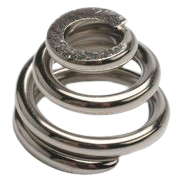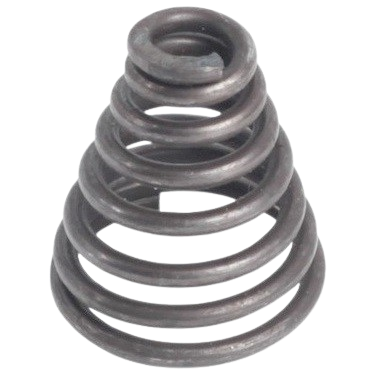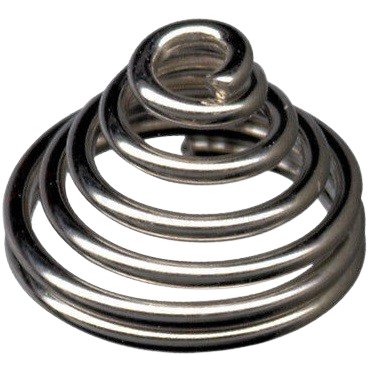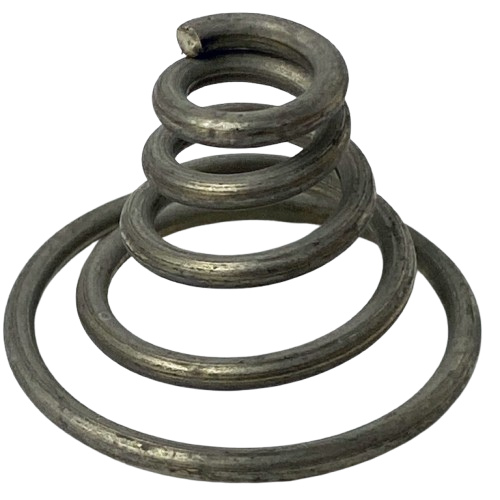Conical Spring




Conical Spring manufacturers in India :
We are Conical Spring manufacturers in India up to the following capacity :
- Wire Dia. : upto 50 mm.
- Outer Dia. : upto 400 mm.
- Free Height : upto 800 mm.
- Total Coils : As per user’s requirement
- Load capacity : upto 30 Tons. (per pc.)
Raw-material grades used in Conical Spring manufacturing :
Following Spring Steel Grades are used in Conical Spring manufacturing :
- BS:970
- EN-42
- BS:970
- EN-45
- BS:970 EN-47
- 50Cr.V4
- 50Cr.4V2
- 51Cr.V4
- 50Cr.MoV4
- 50Si7
- 55Si7
- 60Si7
- SUP-9
- SUP-9A
- SAE-5160
- IS:4454 Part-1 Grade-2
- IS:4454 Part-1 Grade-2D
- Stainless Steel
- others similar foreign grades JIS, ASTM etc.
Painting & Coating used after Conical Spring manufactured :
Following painting / coating is used after Conical Spring manufactured to protect it’s surface for long time :
- Synthetic Enamel Paint
- Powder Coating
- Phosphate
- Zinc Coating
- etc.
How Conical Spring is manufactured :
Know here how the Conical Spring is manufactured step by step :
- Raw material Dimension Checking
- Raw material Chemical Testing
- Centre Less Grinding
- Both End Forging
- Bar Heating in Furnace at approx. 950º C
- Coiling on Coiling Pitching Machine
- Oil Quenching for Hardening
- Tempering in Furnace at approx. 450º C
- Scrag Testing
- Height Checking
- End Grinding
- Dimension Checking
- Load Testing
- Shot Peening
- Surface Oiling
- Painting
- Coating
- Packing
- Delivery
Why we are most trusted Conical Spring making company in India ?
- Our 40 years of experience
- Rigorous quality control system
- Competitive pricing
- Worldwide customer satisfaction
- Guaranteed performance
Conical Spring Application :
Here are some common and important Conical Springs application / used are described :
Conical Spring used in Battery holders :
- The conical shape helps maintain consistent electrical contact under varying compression levels.
- Allows nesting of coils for compact storage.
Conical Spring used in Mechanical seals :
- Used to provide consistent axial load while accommodating shaft movement.
- Offers variable stiffness that can handle different pressure ranges.
Conical Spring used in Automotive suspension :
- Provides progressive spring rate, improving comfort and control.
- Helps with space-saving around wheel assemblies.
Conical Spring used in Aerospace components :
- Lightweight and compact solutions where variable force is required.
- Used in landing gear and actuating systems.
Conical Spring used in Vibration dampening devices :
- The changing diameter allows energy dissipation and flexibility in dynamic environments.
- Electrical Switches and Relays.
- Used to ensure a responsive return movement in compact mechanisms.
Conical Spring used in Toys and consumer products :
- For example, retractable pens and pop-up mechanisms where space is constrained.
Conical Spring used in Consumer products :
- Retractable pens : Provides smooth operation in small form factors.
- Toys and pop-up mechanisms : Useful where a spring needs to fully collapse or fit into a tight space.
